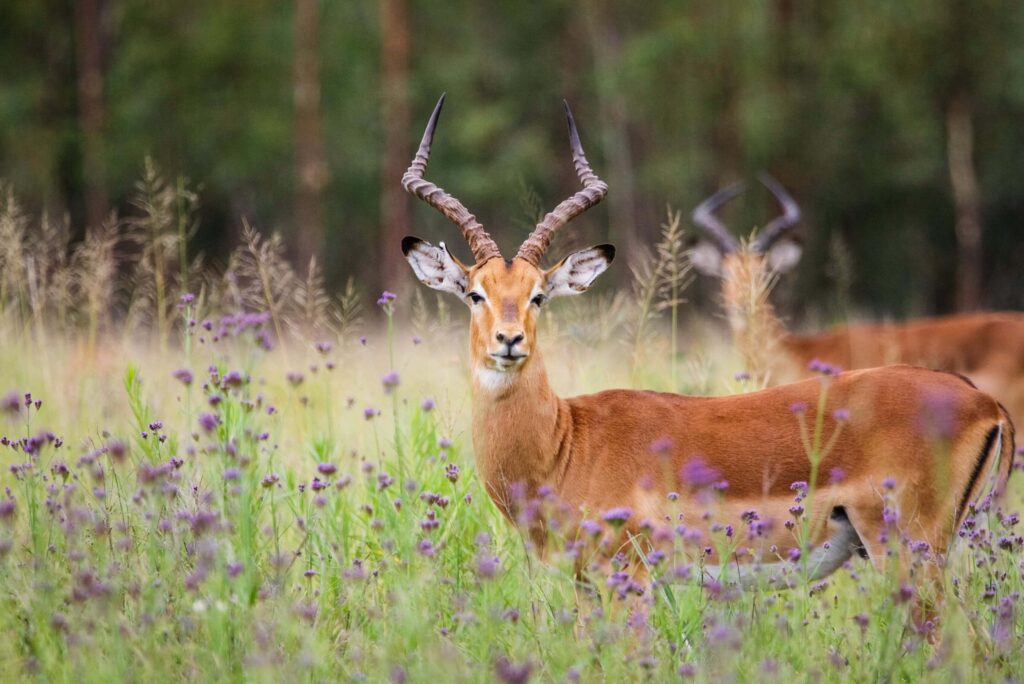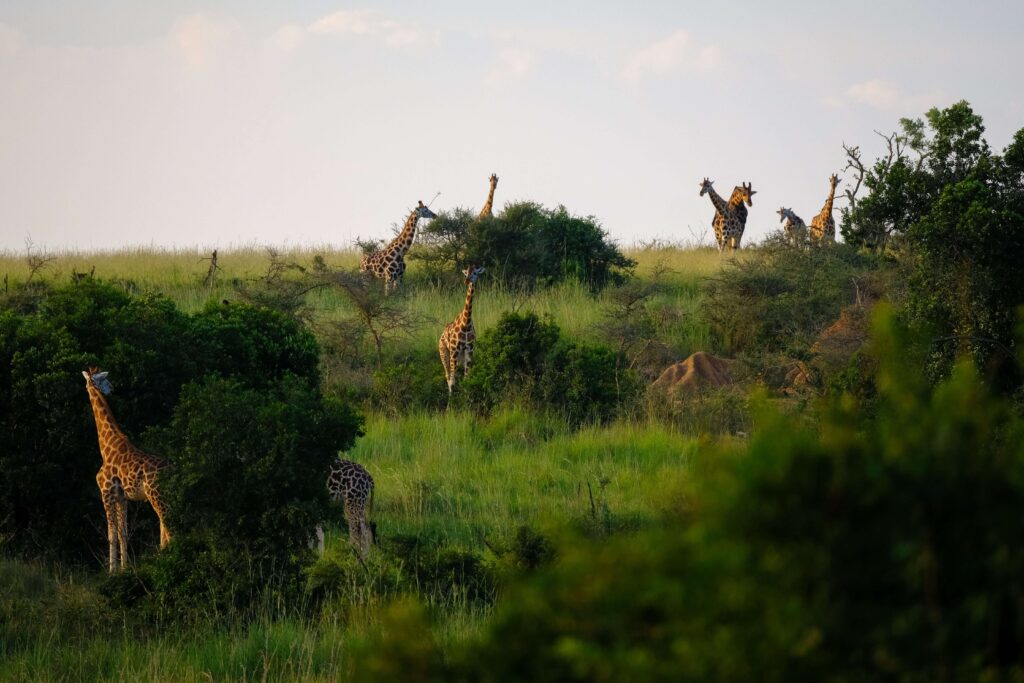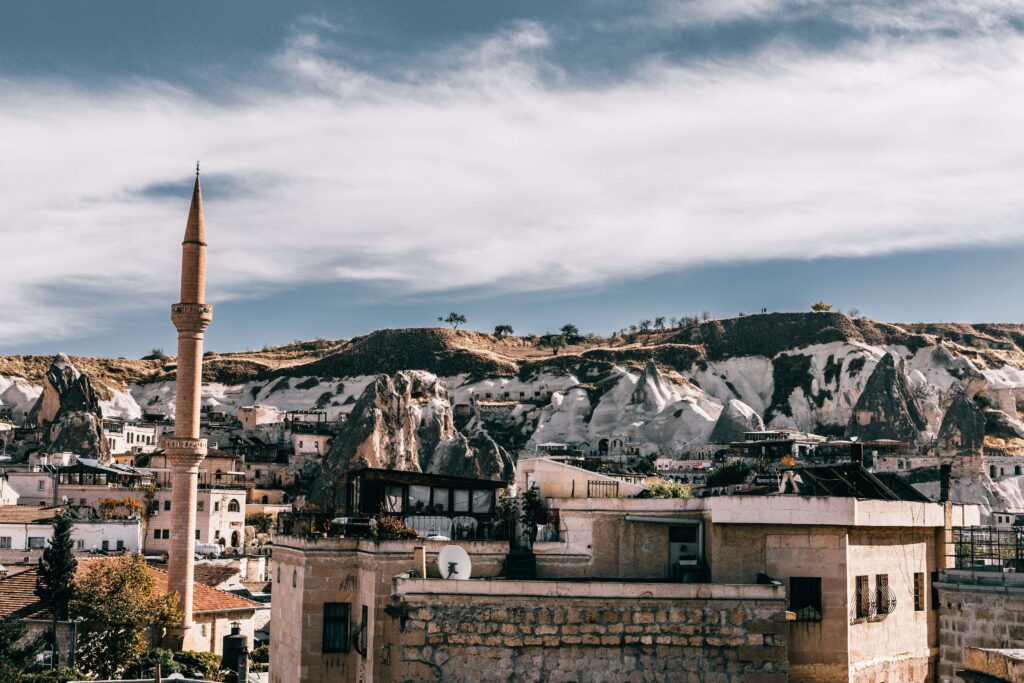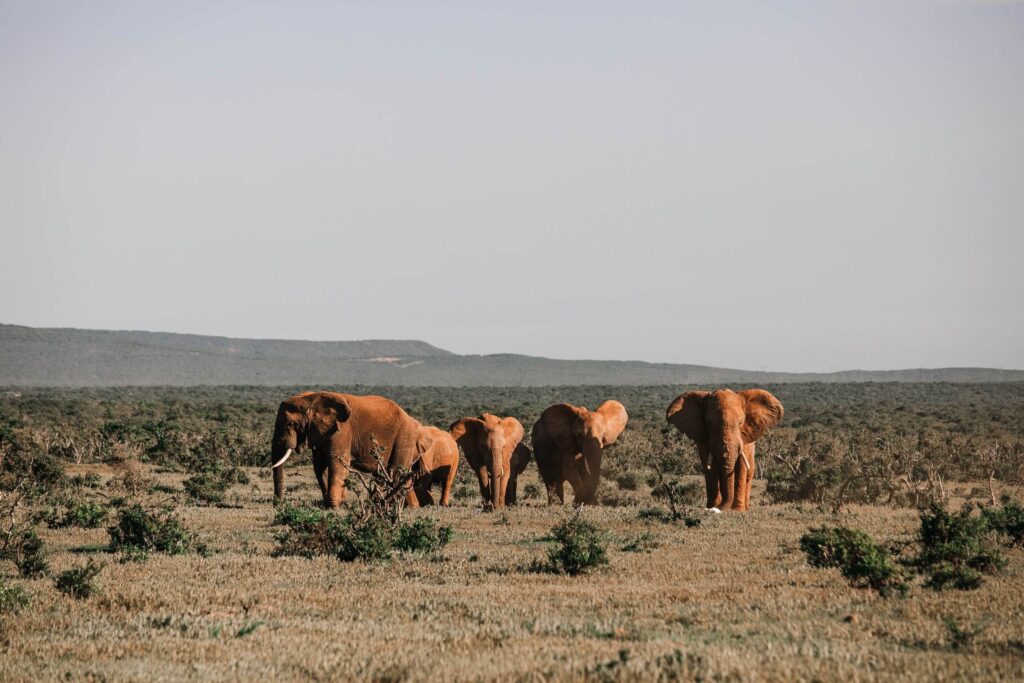
Welcome to the enchanting world of Ranthambore National Park, a haven for wildlife enthusiasts and nature lovers alike. Nestled in the heart of Rajasthan, India, this sprawling sanctuary is renowned for its diverse flora and fauna, with a special emphasis on the majestic Bengal tigers that roam freely within its confines. In this comprehensive guide, we will delve into the rich tapestry of experiences awaiting you at Ranthambore, from thrilling safari adventures to insights into the park’s history and conservation efforts.
Overview of Ranthambore National Park
Nestled in the southeastern part of Rajasthan, Ranthambore National Park stands as a testament to India’s commitment to wildlife conservation. Spread across an expansive 1,334 square kilometers, the park is a haven for biodiversity, housing a diverse range of flora and fauna. Established in 1980, its primary objective was to preserve the dwindling population of Bengal tigers, and today, it proudly stands as one of the prime tiger reserves in the country.
The park is divided into several zones, each with its own unique landscape and wildlife. The varied topography, encompassing dry deciduous forests, lakes, and open grasslands, creates an ideal habitat for numerous species. Besides the iconic Bengal tiger, Ranthambore is home to leopards, striped hyenas, sambar deer, sloth bears, and a plethora of bird species, making every safari a thrilling adventure.
Ranthambore’s success in tiger conservation can be attributed to stringent protection measures and community involvement. The “Project Tiger” initiative, launched by the Indian government, played a pivotal role in reviving the tiger population, turning Ranthambore into a model for effective wildlife management.
Visitors to Ranthambore can explore the park through its network of safari routes, each providing a unique perspective on the wildlife and landscape. A rendezvous with a majestic tiger, whether lounging in the shade or prowling through the grasslands, is an experience that etches itself into the memory of every visitor.
Beyond its wildlife allure, Ranthambore holds historical significance with the imposing Ranthambore Fort overlooking the park. Dating back to the 10th century, the fort offers a glimpse into the region’s royal past and provides a breathtaking panoramic view of the surrounding landscape. Ranthambore National Park, with its blend of wildlife and history, promises an unforgettable journey into the heart of nature’s wonders.

Best Time to Visit
Planning your visit to Ranthambore requires careful consideration of the weather and wildlife activity. The park’s opening season from October to June provides the best opportunities for wildlife sightings. The months of October to March offer cooler temperatures, making it pleasant for safaris and increasing the chances of spotting elusive species.
The post-monsoon period from October to December is particularly favorable, as the landscape transforms into a lush green haven, and the animals are more active. The summer months from April to June may be hotter, but this period enhances the likelihood of wildlife congregating near water sources, providing unique viewing opportunities.
It’s essential to note that the park remains closed during the monsoon season from July to September, as heavy rainfall can make the terrain challenging for safaris and pose safety risks. Planning your visit during the optimal months ensures a memorable experience, with comfortable weather and increased chances of encountering Ranthambore’s magnificent wildlife.
Whether you prefer the cool winter breeze or the warm summer sun, Ranthambore National Park offers a unique and captivating experience year-round for wildlife enthusiasts and nature lovers alike.
Safari Experiences
Embarking on a safari adventure in Ranthambore National Park is an exhilarating journey into the heart of the wild, offering the opportunity to witness the splendor of nature up close. The park provides both jeep and canter safaris, each offering a unique perspective on its diverse landscapes and inhabitants.
The three-hour safaris, accompanied by experienced guides and naturalists, take visitors through different zones within the park. These zones include the core areas where tigers are often spotted, as well as buffer areas with varied ecosystems. The guides’ expertise enhances the safari experience, providing insights into the behavior of the park’s inhabitants and increasing the likelihood of encountering elusive species.
Wildlife Sightings and Photography Tips
Ranthambore National Park is a paradise for wildlife enthusiasts and photographers, offering the chance to capture stunning images of diverse flora and fauna, including the iconic Bengal tiger. To make the most of your wildlife photography experience, consider the following tips:
Choose the Right Equipment: Invest in a good quality camera with a telephoto lens to capture wildlife from a safe distance. A sturdy tripod can be beneficial for stability, especially in low-light conditions.
Be Patient: Wildlife photography requires patience. Spend time observing animal behavior and waiting for the perfect shot. Avoid disturbing the animals for the sake of a photograph.
Respect the Park’s Guidelines: Follow the park’s rules and guidelines regarding photography. Maintain a safe distance from the wildlife, and avoid using flash photography, as it can disturb and stress the animals.
Early Mornings and Late Evenings: The golden hours of early morning and late evening offer soft, warm light, ideal for capturing stunning wildlife images. Many animals are also more active during these times.
Understand Animal Behavior: Knowledge of animal behavior helps anticipate movements and actions, increasing the chances of capturing unique and compelling shots.
Practice Ethical Photography: Wildlife photography comes with a responsibility to the environment and the animals. Avoid disturbing their natural behavior and habitats, and refrain from baiting or provoking them for a photograph.
By adhering to these tips, you not only enhance your photography skills but also contribute to the conservation ethos of Ranthambore National Park. Capture the beauty of the wild responsibly and leave with not just photographs but also a deeper appreciation for nature’s wonders.

Historical Significance: Ranthambore Fort
While Ranthambore National Park is renowned for its thriving wildlife, it also boasts a rich historical legacy, most prominently embodied by the formidable Ranthambore Fort. Dating back to the 10th century, this ancient fort stands atop a hill, providing a commanding view of the surrounding landscape and the park itself.
The Ranthambore Fort holds within its walls a tapestry of historical tales, architectural marvels, and cultural significance. As you explore its ruins, you’ll encounter ancient temples, tanks, and gates that tell the story of the Chauhan dynasty, who once ruled this region.
The fort’s strategic location atop a hill was not only advantageous for defense but also provided a vantage point for observing wildlife. The panoramic views from the fort make it an ideal spot for capturing breathtaking photographs of the park’s lush landscapes and the Aravalli Range in the distance.
A visit to the Ranthambore Fort adds a cultural dimension to your wildlife-centric journey. Wander through its impressive gates, such as the Hathi Pol and the Ganesh Pol, and marvel at the intricate carvings that adorn the temples within. The Ganesha Temple, in particular, is a sacred site and a testament to the enduring spiritual significance of the fort.
While exploring the Ranthambore Fort, you may also come across a variety of wildlife, including langurs and peafowls. The coexistence of history and nature within the confines of the fort creates a unique and immersive experience, allowing visitors to appreciate the interconnectedness of Rajasthan’s cultural and natural heritage.
A trip to Ranthambore is incomplete without a visit to the Ranthambore Fort, where the echoes of history resonate with the roars of the Bengal tigers roaming freely in the national park below.
Accommodation Options
Ranthambore National Park offers a range of accommodation options, catering to diverse preferences and budgets. Whether you seek luxurious indulgence, eco-friendly retreats, or budget-friendly lodgings, Ranthambore has something for everyone. Here are some noteworthy accommodation options to consider for your stay:
Oberoi Vanyavilas: For those seeking unparalleled luxury, Oberoi Vanyavilas is an exquisite option. The resort combines opulent accommodation with a wildlife-centric experience, featuring luxurious tents, a spa, and gourmet dining. The property’s proximity to the park ensures convenience for safari excursions.
Taj Sawai Madhopur Lodge: With its regal charm and lush surroundings, Taj Sawai Madhopur Lodge offers a royal retreat. The property, once a hunting lodge for the Maharaja of Jaipur, seamlessly blends heritage aesthetics with modern amenities. It provides a comfortable and culturally rich stay near the national park.
Ranthambhore Kothi: For a more intimate and budget-friendly experience, Ranthambhore Kothi is a popular choice. The property offers cozy rooms, a swimming pool, and a garden, providing a relaxed ambiance after a day of wildlife exploration. Its personalized service and warm hospitality contribute to a memorable stay.
Sher Bagh: Embracing the concept of sustainable luxury, Sher Bagh offers tented accommodations with a focus on eco-friendly practices. The property exudes a safari-chic ambiance, providing a unique blend of comfort and environmental consciousness.
Jungle Vilas: Jungle Vilas caters to travelers seeking a tranquil retreat amidst nature. With spacious rooms and a serene setting, this accommodation option allows guests to unwind in a peaceful atmosphere, making it an excellent choice for those prioritizing relaxation.
Before finalizing your accommodation, consider factors such as proximity to the park, amenities offered, and personal preferences. Whether you opt for a lavish escape or a cozy retreat, the diverse lodging options in Ranthambore ensure a comfortable and memorable stay amid the wilderness.
Local Cuisine and Dining
Exploring Ranthambore is not just about encountering wildlife and exploring historical landmarks; it’s also an opportunity to savor the authentic flavors of Rajasthan. The local cuisine in and around Ranthambore offers a delightful journey for your taste buds, showcasing the rich culinary heritage of the region.

Indulge in the following local delicacies during your visit
Dal Baati Churma: A Rajasthani staple, this dish consists of lentils (dal) served with wheat-flour rolls (baati) and sweetened crumbled wheat (churma). The combination of flavors and textures is a culinary delight.
Laal Maas: This fiery red meat curry, traditionally made with mutton, is a must-try for those who appreciate spicy dishes. The bold flavors are a reflection of Rajasthan’s love for robust and intense spices.
Ker Sangri: A unique combination of dried berries (ker) and beans (sangri), this traditional Rajasthani dish is often enjoyed with roti or rice. The tangy and spicy profile makes it a distinctive culinary experience.
Gatte ki Sabzi: Gram flour dumplings (gatte) are simmered in a spiced yogurt-based gravy, creating a hearty and flavorful vegetarian dish.
Mawa Kachori: Indulge your sweet tooth with mawa kachori, a dessert made with deep-fried pastry stuffed with sweetened khoya (mawa) and dry fruits. It’s a delightful way to end your culinary journey.
Local eateries and restaurants around Ranthambore offer these dishes, allowing you to savor the essence of Rajasthan’s culinary traditions. Whether you choose to dine at your accommodation, explore nearby establishments, or venture into the local markets, the diverse and flavorful cuisine of Ranthambore adds a delectable dimension to your wildlife adventure.
Conservation Initiatives
Ranthambore National Park is not merely a tourist destination but a beacon of conservation efforts, committed to preserving the delicate balance of its ecosystem. Several initiatives and programs contribute to the park’s success in wildlife conservation and sustainable tourism:
Project Tiger: Launched by the Government of India in 1973, Project Tiger aims to protect and conserve the Bengal tiger. Ranthambore National Park, with its significant tiger population, has been a beneficiary of this initiative, contributing to the resurgence of the species.
Community Involvement: Engaging local communities in conservation efforts is crucial for the park’s success. Ranthambore actively involves nearby villages in eco-development programs, creating awareness about the importance of wildlife conservation and providing alternative livelihoods.
Anti-Poaching Measures: Rigorous anti-poaching measures, including the deployment of trained forest guards and the use of advanced technology like camera traps, enhance the protection of wildlife within the park. These efforts have been instrumental in curbing illegal activities that threaten the park’s inhabitants.
Sustainable Tourism Practices: Ranthambore emphasizes sustainable tourism practices to minimize the ecological footprint of visitors. Responsible safari guidelines, waste management programs, and eco-friendly accommodations contribute to the park’s commitment to sustainable tourism.
Research and Monitoring: Ongoing research and monitoring initiatives help gather valuable data on the park’s wildlife, contributing to informed conservation strategies. Scientific studies, such as camera trapping and animal behavior observations, aid in understanding and safeguarding the park’s biodiversity.
As a visitor, you can actively participate in conservation by adhering to park rules, supporting eco-friendly accommodations, and contributing to local conservation initiatives. By fostering a sense of responsibility and environmental stewardship, Ranthambore National Park ensures a sustainable future for both its wildlife and the generations of visitors yet to come.
Conclusion
As you conclude your journey through the wild landscapes of Ranthambore National Park, reflect on the unique blend of nature, history, and conservation that defines this extraordinary destination. From the thrilling encounters with Bengal tigers on safari to the exploration of ancient forts and indulgence in local delicacies, Ranthambore offers a multifaceted experience that transcends the ordinary.
Remember to tread lightly, respecting the delicate balance of this ecological haven. Your visit contributes not only to your personal memories but also to the ongoing efforts to preserve and protect the rich biodiversity of Ranthambore. May the echoes of wildlife roars and the whispers of history linger in your heart as you carry the spirit of this remarkable destination with you. Safe travels, and may your Ranthambore adventure be etched in your memory forever!


